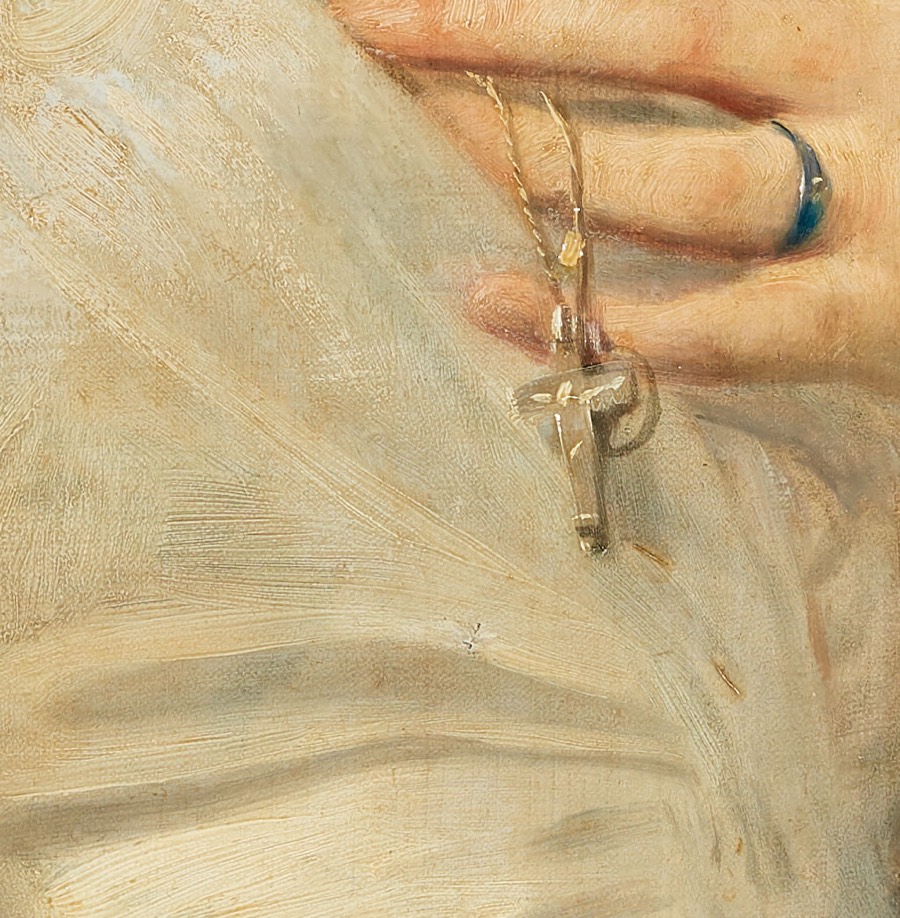This Tiny Detail Revealed a Painting Was Looted by the Nazis

A painting the Nazis looted from a Jewish leader of the French Resistance during World War II has been identified, German authorities announced yesterday (Oct. 25).
The 19th-century painting in question is "Portrait of a Seated Young Woman" by Thomas Couture, a French artist whose other works can be found in institutions like the Metropolitan Museum of Art in New York and the Musée d'Orsay in Paris.
The Couture painting had been confiscated in 2012 when German authorities discovered a possible trove of Nazi-looted art in the Munich apartment of collector Cornelius Gurlitt. But it was not connected with a specific victim of Nazi artwork looting until now. [Images: Missing Nazi Diary Resurfaces]
Gurlitt, who died in 2014, had inherited the collection from his father, an art dealer who had been commissioned by the Nazis to sell looted and "degenerate" art abroad. His collection included pieces from famous artists like Pablo Picasso, Claude Monet, Pierre-Auguste Renoir and Paul Cézanne.
The original owner of the Couture painting was Georges Mandel, a French journalist turned politician, according to the German Lost Art Foundation. Mandel was an early opponent of Nazi Germany and is sometimes called a French counterpart of Winston Churchill. He was eventually arrested and held as an Ehrenhäftling, or "prisoner of honor," in the German camps until his execution in the Forest of Fontainebleau near Paris in 1944.
German art-looting organizations raided Mandel's apartment in Paris. (The German Lost Art Foundation found documents to prove this.) When reports of looted art were filed after war, Mandel's lost Couture painting was described, but only in vague terms. Couture painted many portraits of society women, but there was one detail that helped to identify this stolen artwork. A note from a conservationist mentioned that the canvas had a tiny, repaired hole near the chest of the young woman in the painting. Sure enough, the painting had such a repair.
"I hope very much to see this work returned promptly to the descendants of the original owner," Monika Grütters, Germany’s federal commissioner for culture and media, said in a statement. "We owe it to the people who were persecuted by the National Socialists, deprived of their property and their rights, and in many cases murdered, to leave no stone unturned in investigating and clarifying the Nazi looting of art. It is and remains our moral obligation in cases of artworks seized by the Nazis to find fair and just solutions."
Get the world’s most fascinating discoveries delivered straight to your inbox.
Researchers are still sifting through the Gurlitt collection, which contains more than 1,500 artworks. So far, more than 200 have been identified as works of "degenerate art" that the Nazis had banned, and six (now including the Couture painting) were confirmed as having been looted from victims of Nazi persecution. Some have been returned to descendants of the owners, including a painting by the Impressionist artist Camille Pissarro that was restituted earlier this year, as well as a painting by Henri Matisse that was returned in 2015. Hundreds more of the artworks still await a ruling as to whether they were looted by Nazis. Many of the pieces from the collection will go on display next month as part of the exhibit "Gurlitt: Status Report" at the Bundeskunsthalle museum in Bonn, Germany.
Original article on Live Science.




